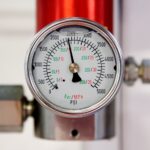Electric baseboard heaters are a familiar sight in many homes, providing a straightforward way to keep rooms warm. However, when these units malfunction due to thermostat or wiring issues, the comfort they offer can quickly turn to frustration. Understanding the underlying problems and knowing how to address them effectively is essential for maintaining a consistent and energy-efficient heating system.
- Discover the telltale signs of thermostat and wiring issues that may cause your electric baseboard heater to underperform.
- Learn troubleshooting techniques to resolve thermostat malfunctions, ensuring precise and dependable temperature regulation.
- Understand how to identify and rectify wiring issues safely, preventing inefficiencies and potential hazards.
- Explore preventive maintenance strategies to keep your electric baseboard heaters running smoothly and efficiently.
By mastering these practical solutions, you can ensure your electric baseboard heaters deliver optimal warmth and performance, while also considering modern alternatives that maximize energy efficiency and reliability. Get ready to enhance your heating system’s functionality and comfort in your space.
Identifying Electric Baseboard Heater Problems: Thermostat and Wiring Solutions
When dealing with electric baseboard heater issues, identifying the root causes related to thermostat and wiring problems is crucial. These components play a vital role in ensuring your heater operates smoothly and efficiently. One of the most common symptoms to watch out for is inconsistent heating. This can manifest as uneven warmth throughout your space, suggesting a potential issue with the thermostat’s ability to accurately read and maintain the set temperature.
Another clear sign of trouble is a non-responsive heater unit. If your electric baseboard heater fails to turn on or off as expected, it could indicate a malfunctioning thermostat or a wiring problem. Additionally, sudden spikes in your energy bills may point to inefficient operation due to faulty wiring connections, causing the heater to work harder than necessary.
Listen for unusual noises coming from the heater, as buzzing or clicking sounds can suggest underlying electrical issues. Promptly identifying these common symptoms will help you address problems before they escalate, enhancing your heating system’s reliability.
Troubleshooting Electric Baseboard Heater Thermostat Problems
Addressing thermostat problems in your electric baseboard heater is essential for maintaining precise temperature control and ensuring comfort. Begin by checking the thermostat settings. Ensure they align with your desired temperature and that the device is set to ‘heat’ mode. If adjustments do not resolve the issue, consider testing the thermostat for accuracy using a reliable thermometer.
A common troubleshooting step is to inspect the thermostat wiring. Look for any loose or frayed connections, which can disrupt communication between the thermostat and the heater, leading to erratic temperature regulation. Secure any loose wires and replace damaged ones to restore proper power flow.
If the thermostat remains unresponsive, replacing it with a newer, more reliable model might be necessary. Choose a programmable or smart thermostat to gain better control over your heating schedule and enhance energy efficiency. Regular maintenance and timely interventions will ensure your electric baseboard heater operates at its best, providing consistent warmth and comfort.
Diagnosing Wiring Issues in Electric Baseboard Heater Problems: Thermostat and Wiring Solutions
Wiring problems can significantly impact the performance and efficiency of your electric baseboard heaters. Identifying these issues early can save you from unexpected malfunctions and costly repairs.
One of the primary signs of wiring trouble is inconsistent heating, where some sections of the heater remain cool while others are warm. Another indication might be a buzzing or humming sound, suggesting loose connections or faulty wiring. Addressing these symptoms promptly can help maintain optimal functionality.
Before you embark on diagnosing wiring problems, ensure that the electrical circuit to the heater is switched off. Safety should always be your first concern. Once the power is off, inspect the wiring for visible signs of wear or damage, such as frayed wires or burnt insulation. These are common causes of electrical inefficiency.
If you’re comfortable with basic electrical tasks, use a multimeter to check for continuity in the wiring. This device can help you pinpoint where the issue may lie by indicating whether the current effectively flows through the wires. If there’s a break in continuity, the wiring might need replacement.
Should you find any significant damage, it is advisable to contact a certified electrician for repairs. While diagnosing is a task you might undertake, handling faulty wiring should be left to professionals to prevent any safety hazards or further damage.
Maintenance Tips for Preventing Electric Baseboard Heater Problems
Regular maintenance is key to preventing electric baseboard heater problems and ensuring they operate efficiently when you need them the most. Incorporating simple routine checks can extend the lifespan of your heating system and reduce the risk of unexpected breakdowns.
Start with cleaning the heater’s surfaces to remove dust and debris, which can cause overheating and reduce efficiency. Using a vacuum with a brush attachment is often effective in reaching those difficult-to-clean areas between fins.
Inspect the electrical connections at least once a year. Ensure that screws and other fasteners are tight, minimizing the risk of loose connections that could lead to wiring issues or energy wastage.
Another crucial aspect of maintenance is checking the heater’s thermostat. Make sure it is functioning correctly and accurately reflecting the room’s temperature. Faulty thermostats can cause overworking, leading to higher energy consumption and wear on the heater.
Lastly, consider periodic professional inspections. An experienced technician can provide a thorough assessment and carry out any preventive maintenance tasks that may be necessary. This not only helps in spotting potential issues but also ensures your system remains in top condition, offering you peace of mind and comfort throughout its usage.
Upgrading Solutions: Modern Alternatives to Electric Baseboard Heater Problems
As energy efficiency and performance become increasingly important, exploring modern heating solutions is beneficial for those relying on electric baseboard heaters. These alternatives not only enhance your home’s comfort but also reduce the strain on older systems that might be prone to frequent problems.
One popular option is the smart thermostat, which offers precise control over your heating schedule and preferences. This technology allows you to adjust temperatures remotely via smartphone apps, ensuring your home is heated only when necessary. By optimizing your heating patterns, you’ll notice a significant reduction in energy consumption.
Additionally, consider investing in ductless mini-split systems, which provide both heating and cooling. These systems offer zoned heating capabilities, allowing you to set different temperatures for various parts of your home. They are known for their energy efficiency and can be a cost-effective replacement for traditional electric baseboard heaters.
Another modern alternative is the radiant floor heating system. Unlike baseboard heaters, radiant floor systems distribute warmth evenly beneath your floors. This method offers greater efficiency and comfort, eliminating cold spots and providing consistent heating throughout a room.
If you’re concerned about the aesthetics and space consumption of older heaters, consider panel heaters. These sleek, wall-mounted units save space and blend seamlessly with home décor. They warm spaces efficiently without the bulkiness associated with traditional baseboard units.
When selecting an upgrade, it’s vital to consider the specific needs of your home and family. Consulting with an HVAC professional can provide insights into which modern heating solution would best fit your lifestyle and deliver the ultimate balance of performance and efficiency, ensuring reliable warmth even during the coldest months.
FAQ: Common Electric Baseboard Heater Issues
What are signs of a failing thermostat in an electric baseboard heater?
Inconsistent temperature control and non-responsive settings are typical indicators.
How can I troubleshoot wiring issues in my electric baseboard heater?
Ensure the unit is off before inspecting connections for damage or loose wires.
What maintenance steps can help prevent electric baseboard heater problems?
Regularly clean the heater and check for signs of wear or damage.
Are there modern alternatives to electric baseboard heaters?
Yes, consider options like ductless mini-split systems or programmable smart heaters.
Why is it important to address wiring and thermostat issues promptly?
Ignoring problems can lead to inefficiency and potential safety hazards.





